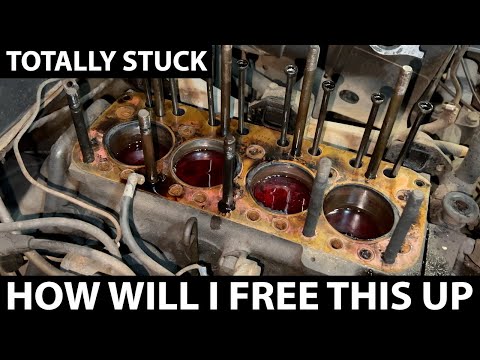How to Free a Stuck Car Engine
1. Safety First
Before you attempt to free a stuck car engine, it is important to take safety precautions. Park the car on a flat surface, engage the parking brake, and put the car in park if it is an automatic transmission or neutral if it is a manual transmission. Turn off the engine and allow it to cool down for a few minutes.
2. Check the Battery
A weak or dead battery can prevent the engine from cranking. Check the battery terminals to make sure they are clean and tight. If the terminals are loose, tighten them with a wrench. If the battery is dead, it will need to be replaced or jumped.
3. Check the Fuel Level
A lack of fuel can also prevent the engine from cranking. Check the fuel gauge to make sure there is enough fuel in the tank. If the fuel level is low, add fuel to the tank.
4. Check the Starter
The starter is responsible for cranking the engine. If the starter is not working, the engine will not be able to start. To check the starter, listen for a clicking sound when you turn the key to the start position. If you hear a clicking sound, the starter may be faulty and will need to be replaced.
5. Check the Spark Plugs
Spark plugs are responsible for igniting the air-fuel mixture in the engine. If the spark plugs are fouled or damaged, the engine will not be able to start. To check the spark plugs, remove them from the engine and inspect them. If the spark plugs are fouled, clean them with a wire brush. If the spark plugs are damaged, they will need to be replaced.
6. Check the Ignition Coil
The ignition coil is responsible for supplying voltage to the spark plugs. If the ignition coil is faulty, the engine will not be able to start. To check the ignition coil, use a multimeter to measure the resistance between the primary and secondary windings. If the resistance is not within specifications, the ignition coil will need to be replaced.
7. Check the Fuel Pump
The fuel pump is responsible for delivering fuel to the engine. If the fuel pump is not working, the engine will not be able to start. To check the fuel pump, listen for a humming sound when you turn the key to the on position. If you do not hear a humming sound, the fuel pump may be faulty and will need to be replaced.
8. Check the Timing Belt
The timing belt is responsible for synchronizing the crankshaft and camshaft. If the timing belt is broken or damaged, the engine will not be able to start. To check the timing belt, remove the timing belt cover and inspect the belt. If the belt is broken or damaged, it will need to be replaced.
9. Check the Engine Computer
The engine computer is responsible for controlling the engine’s functions. If the engine computer is faulty, the engine will not be able to start. To check the engine computer, use a diagnostic scan tool to read the trouble codes. If the engine computer is faulty, it will need to be replaced.
10. Call for Help
If you have tried all of the above steps and the engine still will not start, you may need to call for help. A mechanic can diagnose the problem and repair the car.





